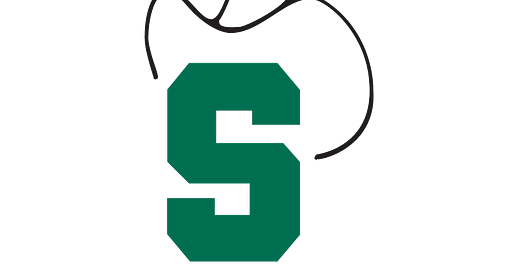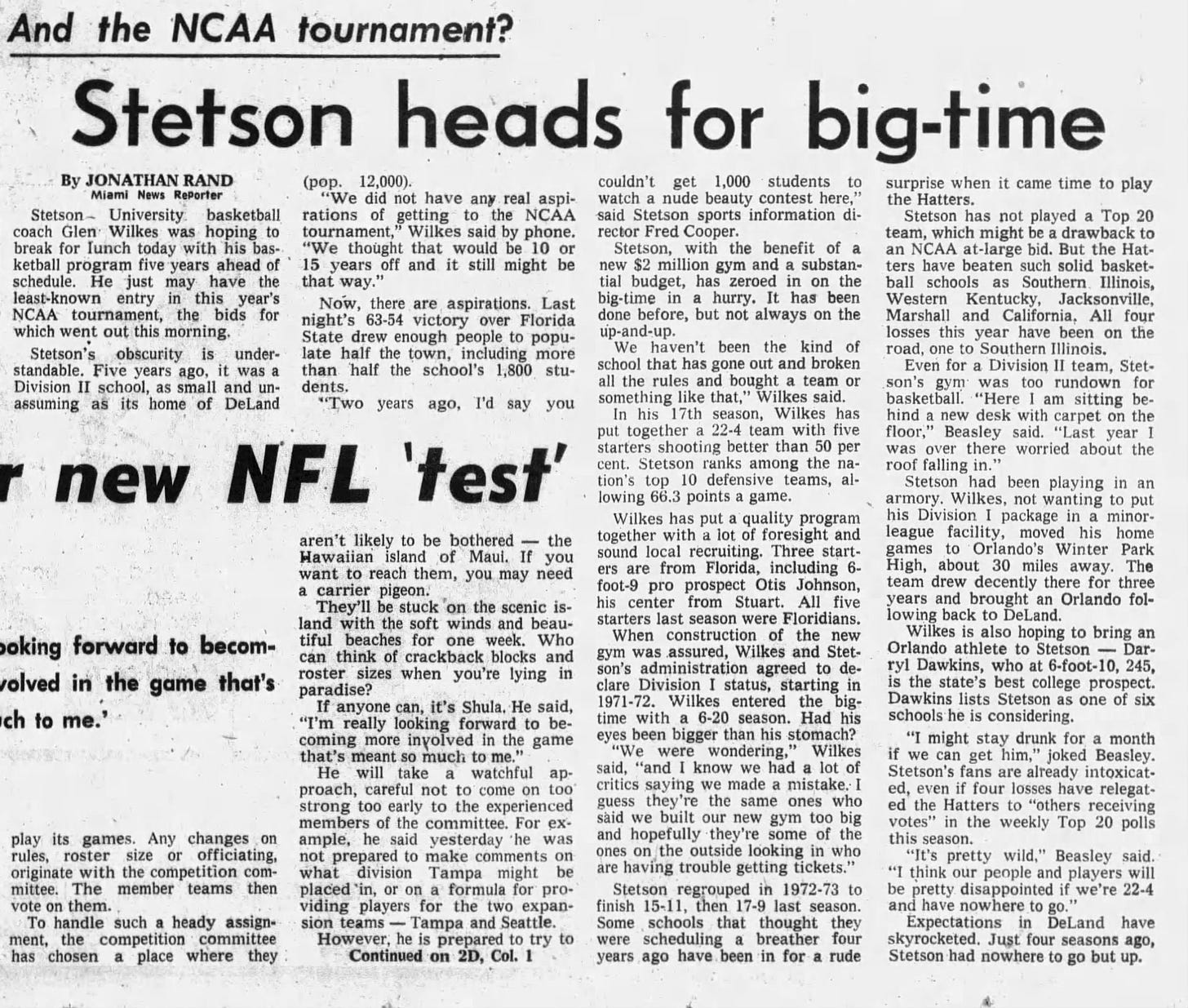It may not be one of the 1939 originals, but Stetson basketball earning its first-ever NCAA Tournament bid in program history is no insignificant milestone.
The Hatters, 2024 ASUN Tournament champions, have played Div. I basketball since 1971. Stetson had some solid teams, too, including a 22-win squad that beat Western Kentucky, Cal on the road and Florida State behind big man Otis Johnson.
Johnson averaged 15.7 points and nine rebounds per game. “O.J.” was impactful enough that his lone season at Stetson after transferring from Florida State earned him a Hall of Fame induction at the school in 2000.
It’s not surprising Johnson’s one-year Stetson is held in such high esteem, though. As star of a 22-4 Hatters team, which celebrates its 50th anniversary next year, Johnson led the last Stetson squad to win 20 games.
The last until this season’s, anyway.
With a 94-91, comeback win over Austin Peay in the ASUN Championship Game, the 2023-24 Hatters improved to 22-12. They’ll presumably have an opportunity to set a program record with 23 wins, should they land in Dayton for the First Four.
Regardless of how or where Stetson is seeded, coach Donnie Jones — also making his NCAA Tournament debut — has a team worth checking out. Jalen Blackmon specifically could very well be the next explosive scorer to emerge from obscurity with a breakout March Madness performance.
Blackmon powered Stetson to the ASUN title with a spectacular, 43-point outpouring.
His championship performance was no aberration, either. Blackmon came into the ASUN final averaging just fewer than 21 points per game, and with outputs of more than 30 points in a win over Charlotte and a competitive loss to Cincinnati.
Like Otis Johnson in 1975, one season’s worth of competition is seemingly sufficient for establishing Blackmon as a program legend — though this is his second with the Hatters.
A transfer from Grand Canyon, Blackmon averaged 15.4 points per game a season ago. His 2022-23 was certainly productive, but nothing near the magnitude of Blackmon’s, and Stetson’s 2023-24.
In having the stage of March Madness, Blackmon has the opportunity not afforded to predecessor Otis Johnson.
The 1975 NCAA Tournament was the first in which conferences could send multiple representatives to the Dance, with previous iterations limiting bids to conference champions and independent at-large selections.
Cruel irony for Johnson and the Hatters is that a year earlier, they may have had a stronger case for the NCAA Tournament.
As it was, with a 22-4 record in just the program’s fifth year of Div. I membership, Hatters coach Glenn Wilkes seemed reasonably confident about Stetson’s prospects in a Miami News article published the morning of the 1975 NCAA Tournament selection announcement.
Revisiting this article 50 years later underscores just how briefly the window opens for the lower-budgeted, lesser-resourced programs that give March Madness its identity.
A Stetson program that in Year 5 of its Div. I existence waited another five decades to get another shot at the game’s biggest stage.
Timing and circumstances were unkind to the 1975 Hatters in more ways than one. Otis Johnson, for example, graduated out of the college game just as the American Basketball Association was in the process of emerging its last few members into the NBA, meaning fewer domestic pro opportunities.
Johnson got the call from the NBA in the 1975 draft when the Golden State Warriors — fresh off winning the Larry O’Brien Trophy — selected him.
Later that fall, Warriors coach Al Attles made the call to release Johnson, reportedly laboring over the decision with Johnson as the final cut.
Wilkes said in an interview that October Johnson landing with the reigning champions as opposed to a team more in need of depth concerned him for that very reason.
Fate sometimes works against players and teams. Finally, after a half-century, fate was on Stetson basketball’s side.





